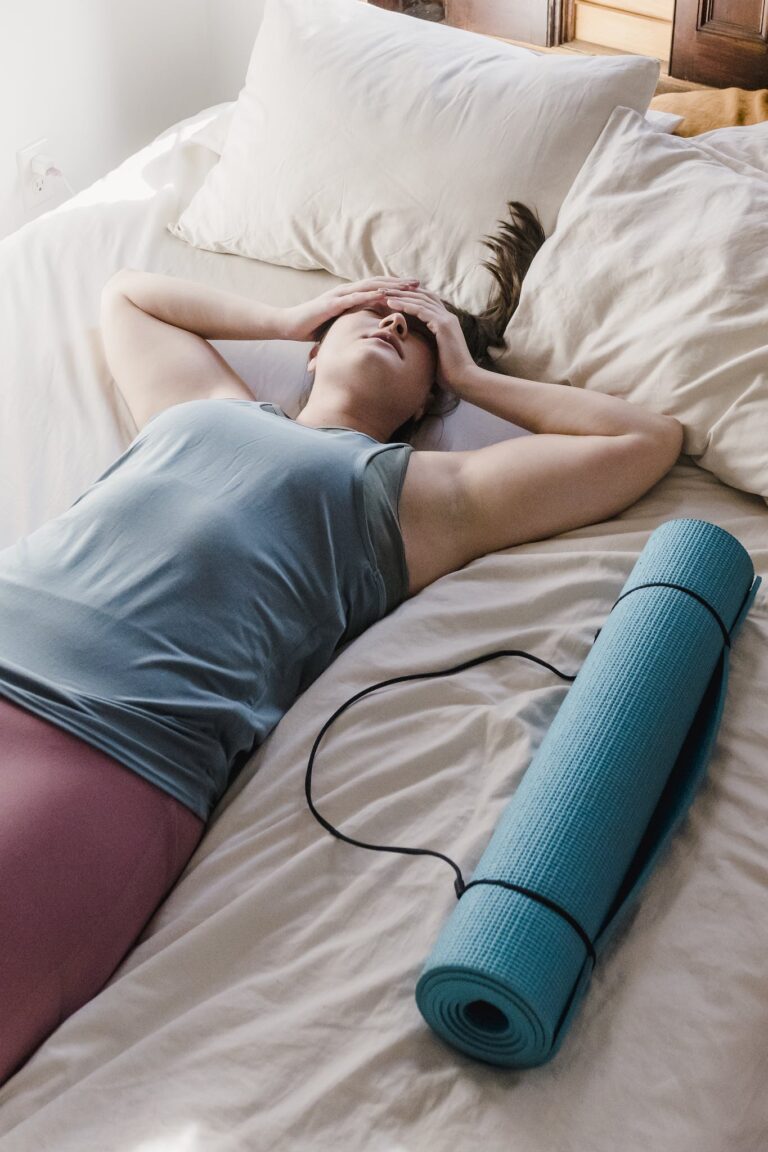The Truth About Power Naps: Are They Good or Bad for You?

The Benefits of Power Naps

Power naps have gained recognition for their numerous benefits in recent years. These short periods of rest, typically lasting between 10 and 30 minutes, can have a significant positive impact on both mental and physical well-being.
One of the key benefits of power naps is their ability to enhance alertness and boost productivity. When we feel drowsy or fatigued during the day, taking a short nap can help us recharge and combat the feelings of sluggishness. Research suggests that even a brief nap can improve cognitive function, including memory, attention, and problem-solving skills. This can lead to increased productivity and better overall performance in daily tasks.
Moreover, power naps can also have a positive effect on our mood. When we are tired, it’s common to experience irritability, mood swings, or even a decrease in motivation. Taking a nap can help alleviate these mood disturbances, leaving us feeling more refreshed, rejuvenated, and ready to tackle the rest of the day. This can contribute to better mental well-being and a more positive outlook on life.
In summary, power naps offer significant benefits ranging from increased alertness and productivity to improved mood. Incorporating these short periods of rest into our daily routine can have a profound impact on our overall well-being and quality of life.
The Science Behind Power Naps

Power naps have gained popularity in recent years due to their ability to enhance productivity and improve alertness. The science behind power naps lies in the natural sleep cycles our bodies undergo. These cycles consist of different stages, including light sleep, deep sleep, and Rapid Eye Movement (REM) sleep.
During a power nap, individuals typically enter the first stage of sleep, known as light sleep. This stage allows the brain to rest and recharge, providing a quick reset to combat fatigue and drowsiness. Research suggests that power napping for around 10 to 30 minutes can improve cognitive function, memory, and learning abilities. It also aids in mood enhancement, making individuals more alert and focused for the tasks ahead. Understanding the science behind power naps allows us to harness their benefits effectively to ensure optimal performance throughout the day.
The Ideal Length for a Power Nap
As we go about our busy lives, finding time to rest and recharge can sometimes feel like a luxury. However, research has shown that incorporating power naps into our daily routine can have numerous benefits on our overall well-being and productivity. But what is the ideal length for a power nap?
According to sleep experts, the ideal length for a power nap typically ranges between 10 to 20 minutes. This short duration allows you to reap the benefits of a nap without entering into deep sleep, which can leave you feeling groggy and disoriented upon waking up. During a power nap, your body enters a stage of light sleep, allowing your brain to relax and recharge, improving alertness and focus when you wake up.
Studies have shown that a 10 to 20-minute power nap can significantly improve cognitive function, memory retention, and creativity. It can also help reduce stress, improve mood, and enhance overall mental and physical performance. Additionally, incorporating power naps into your daily routine can combat the effects of sleep deprivation, providing you with a much-needed energy boost to tackle the rest of your day.
While the benefits of power naps are clear, it’s important to note that the ideal length may vary for each individual. Factors such as age, sleep quality, and individual preferences can influence the optimal duration. It’s recommended to experiment and find the duration that works best for you. So, the next time you feel your energy levels plummeting during the day, consider taking a brief power nap to recharge and maximize your productivity.
How Power Naps Can Boost Productivity
Power naps have long been touted as a secret weapon for boosting productivity. Research suggests that taking a short nap during the day can provide numerous benefits that can directly translate into increased efficiency and focus in our daily tasks.
One of the key ways in which power naps contribute to improved productivity is by combating fatigue. When we start to feel tired or drowsy, it becomes increasingly difficult to stay alert and attentive to our work. However, a power nap can effectively alleviate this fatigue, allowing us to recharge our mental and physical energy levels. Studies have shown that even a short nap of 10 to 20 minutes can significantly reduce feelings of sleepiness and enhance cognitive performance.
Another way in which power naps can boost productivity is by improving our mood and reducing stress levels. When we are stressed or in a negative emotional state, it becomes harder to concentrate and be productive. Taking a nap can help reset our emotional equilibrium, promoting feelings of relaxation and calmness. This can not only enhance our mental well-being but also create a positive atmosphere that fosters productivity and creativity.
Here’s information on power naps and their benefits:
| Power Naps and Their Benefits | Key Concepts and Considerations | Credible Source |
|---|---|---|
| Duration of Power Naps | – Key Concept: Power naps are brief naps lasting approximately 10 to 20 minutes. | Mayo Clinic – Power Nap: Improve Your Memory, Creativity, and Learning |
| – Considerations: Short durations help prevent entering deeper sleep stages, reducing the risk of sleep inertia. | ||
| Boost in Alertness | – Key Concept: Power naps can provide a quick boost in alertness and energy levels. | National Sleep Foundation – How to Power Nap |
| – Considerations: Improved alertness can enhance performance and cognitive functions. | ||
| Enhanced Cognitive Performance | – Key Concept: Power naps have been linked to improvements in memory, creativity, and learning. | Harvard Health Publishing – Napping may not be such a no-no |
| – Considerations: The benefits extend to enhanced cognitive abilities and problem-solving skills. | ||
| Stress Reduction | – Key Concept: Brief naps can help reduce stress and promote relaxation. | Sleep.org – The Benefits of Power Napping |
| – Considerations: Stress reduction contributes to an improved overall sense of well-being. | ||
| Mood Improvement | – Key Concept: Power naps can positively impact mood and emotional well-being. | American Psychological Association – The Benefits of Brief Naps |
| – Considerations: A short nap can enhance mood and resilience to emotional stressors. | ||
| Increased Productivity | – Key Concept: Power naps can lead to increased productivity and work performance. | Sleep Foundation – How Power Naps Can Help You |
| – Considerations: Companies promoting nap-friendly policies have reported improved employee productivity. | ||
| Improved Memory Consolidation | – Key Concept: Power naps, especially those incorporating REM sleep, aid in memory consolidation. | Nature Reviews Neuroscience – The neural basis of sleep and memory consolidation |
| – Considerations: Short naps can contribute to better retention of information and learning. | ||
| Management of Afternoon Slump | – Key Concept: Power naps can effectively combat the natural dip in alertness during the afternoon. | National Sleep Foundation – The Benefits of Napping |
| – Considerations: A well-timed nap helps manage the post-lunch energy slump, promoting sustained alertness. | ||
| Cardiovascular Health | – Key Concept: Some studies suggest that regular napping may have cardiovascular benefits. | Journal of the American College of Cardiology – Association of napping with incident cardiovascular events in a prospective cohort study |
| – Considerations: Research is ongoing, and the relationship between napping and cardiovascular health is complex. |
The Effects of Power Naps on Cognitive Function
Power naps have been found to have a significant impact on cognitive function. When we engage in a short nap, typically lasting anywhere from 10 to 30 minutes, several cognitive processes are positively affected. Studies have shown that power naps can enhance our attention span, improve memory retention, and enhance overall cognitive performance.
Firstly, power naps have been demonstrated to improve attention and focus. When we are sleep-deprived or feeling fatigued, our ability to concentrate on tasks diminishes. However, a power nap can help to combat this by providing a quick burst of restorative sleep, allowing our brain to recharge. As a result, after a power nap, we tend to feel more alert and attentive, which can greatly improve our cognitive performance throughout the day.
Secondly, power naps have been linked to enhanced memory retention. During sleep, our brain processes and consolidates information obtained throughout the day. By taking a power nap, we provide our brain with an opportunity to transfer newly acquired knowledge into long-term memory storage more effectively. As a result, individuals who include power naps in their daily routine may experience improved recall and better overall learning outcomes.
In conclusion, power naps have a valuable impact on cognitive function. They can enhance attention, improve memory retention, and ultimately lead to improved cognitive performance. Incorporating power naps into our daily routines may be an effective strategy to boost productivity and overall mental well-being. However, it is essential to consider individual variations in sleep needs and to adjust nap lengths accordingly to maximize their benefits.
Power Naps and Improved Alertness
Power naps have long been recognized as a powerful tool to boost alertness and combat drowsiness. Research suggests that a short nap of about 10 to 20 minutes can significantly increase alertness and improve cognitive performance, making it an excellent strategy for those who need an energy boost during the day. During a power nap, the brain experiences a period of rest and rejuvenation, allowing it to recharge and restore its optimal functioning.
One of the key reasons why power naps enhance alertness is their impact on sleep pressure. Sleep pressure builds up throughout the day, leading to increased drowsiness and decreased wakefulness. Taking a power nap helps to alleviate this sleep pressure, reducing feelings of fatigue and restoring mental acuity. Furthermore, power naps have been found to enhance memory consolidation, creativity, and problem-solving abilities, all of which contribute to improved alertness and productivity in the waking hours.
Incorporating power naps into your daily routine can be an effective strategy for maintaining optimal alertness throughout the day. However, it is important to remember that the ideal length for a power nap may vary from person to person, and it is essential to consider individual needs and preferences. By understanding the science behind power naps and their impact on alertness, individuals can harness the benefits of these short periods of rest and reap the rewards of improved cognitive functioning. So, whether you are a student cramming for exams, a professional navigating a demanding work schedule, or simply someone in need of an energy boost, embrace the power of napping to enhance your alertness and stay at the top of your game.
Power Naps for Stress Reduction

Stress has become a prevalent aspect of our lives, affecting our physical and mental well-being. While there are various strategies to manage stress, one approach that has garnered attention is power napping. Power naps, short periods of sleep ranging from 10 to 20 minutes, have been recognized for their potential in reducing stress levels.
The act of taking a power nap allows the body to relax and rejuvenate, leading to a decreased production of stress hormones such as cortisol. Additionally, power napping has been found to improve mood and increase alertness, enabling individuals to better cope with stressors. Studies have shown that even a brief nap can have significant psychological benefits, helping individuals to feel refreshed and more resilient in the face of stress.
Power Naps as a Remedy for Sleep Deprivation
Sleep deprivation can have significant negative effects on both physical and mental health. From impaired cognitive function to compromised immune system, the consequences of not getting enough sleep are far-reaching. However, power naps have emerged as a simple yet effective remedy for combating sleep deprivation.
Power naps, also known as catnaps, are short periods of sleep that typically last between 10 to 30 minutes. These brief naps can help to restore energy levels and improve alertness, making them an ideal solution for individuals who are sleep-deprived. By allowing the brain to enter a brief period of sleep, power naps can help to recharge the body and provide a much-needed boost in productivity.
Research has shown that power naps can have a positive impact on various aspects of cognitive function. Studies have found that even a short nap can enhance memory, attention, and problem-solving abilities. Additionally, power naps have been shown to improve mood and reduce stress levels. These benefits can be particularly helpful for individuals who are experiencing sleep deprivation, as they provide a quick and effective way to recharge and rejuvenate the mind and body.
The Impact of Power Naps on Memory and Learning
Numerous research studies have shown that power naps can have a significant impact on memory and learning. In fact, taking a short nap during the day has been found to enhance cognitive function and improve memory recall. How does this work? When we sleep, especially during a power nap, our brain goes through different stages of sleep, including a period of rapid eye movement (REM) sleep. During this stage, our brain consolidates and processes information, allowing for better retention of learned material.
One study conducted by Mednick et al. (2003) examined the effects of a 60 to 90-minute nap on memory performance. The results indicated that individuals who took a nap performed significantly better on a spatial memory task compared to those who remained awake. Similar findings were reported in a study by Esquivel and Fich (2018) who investigated the impact of a short nap on procedural memory. They found that participants who napped for just 10 minutes exhibited improved performance on a motor skill task compared to those who did not nap.
These findings suggest that power naps can enhance memory consolidation and facilitate the learning process. Whether you’re a student cramming for an exam or a professional trying to absorb new information, incorporating short naps into your routine may prove to be beneficial. However, it is important to note that the duration and timing of your nap may influence its impact on memory and learning. Therefore, careful consideration should be given to finding the optimal length and time of day to maximize the benefits.
Power Naps and Improved Mood
Power naps not only provide a boost in energy and alertness but also have a positive impact on our mood. Research has shown that taking a short nap during the day can help improve our emotional well-being and enhance our overall mood.
One of the ways in which power naps contribute to an improved mood is by reducing stress levels. Napping for just 20 minutes has been found to decrease stress hormones circulating in the body. This reduction in stress hormones can help alleviate feelings of tension and anxiety, leaving us feeling more relaxed and content. Moreover, power naps can also act as a reset button for our emotions, allowing us to approach challenges with a fresh perspective and a calmer state of mind.
In addition to lowering stress levels, power naps have been found to have a positive impact on emotional regulation. When we are sleep-deprived, it becomes more difficult for us to manage our emotions effectively. Taking a short nap can help restore our emotional balance by improving our ability to regulate our feelings and reactions. This can result in a greater sense of emotional stability and a more positive outlook on life.
The Best Time of Day for a Power Nap

Power napping is a popular method for improving alertness and productivity throughout the day. However, the timing of these naps can greatly affect their effectiveness. Research has shown that the best time of day for a power nap is in the early afternoon, between 1 p.m. and 3 p.m.
During this time period, our bodies naturally experience a drop in energy levels, commonly known as the “post-lunch dip.” This dip is a normal part of our circadian rhythm, the internal biological clock that regulates our sleep-wake cycle. Taking a power nap during this specific window can help combat the natural decrease in energy and enhance our overall alertness.
One important factor to consider when scheduling a power nap is to avoid napping too close to bedtime. Napping too late in the day, especially in the evening or near nighttime, can disrupt our normal sleep patterns and make it harder to fall asleep at night. It is recommended to keep power naps within a 20-30 minute range to prevent entering a deeper stage of sleep, which can leave us feeling groggy and disoriented upon waking up.
In conclusion, the best time of day for a power nap is in the early afternoon, between 1 p.m. and 3 p.m. This allows us to take advantage of our body’s natural energy dip while avoiding interference with night-time sleep. By incorporating power naps into our daily routine, we can experience increased alertness and productivity, ultimately enhancing our overall well-being.
Tips for Maximizing the Benefits of Power Naps
A power nap can be an excellent way to recharge and boost productivity throughout the day. However, to maximize the benefits of your power nap, there are a few key tips to keep in mind. First, it’s important to find a quiet and comfortable environment where you can relax and unwind. Creating a peaceful atmosphere can help you fall asleep faster and achieve a more restful nap.
Timing is also crucial when it comes to power napping. Aim to nap for no longer than 20-30 minutes to avoid entering into deep sleep stages, which can leave you feeling groggy and disoriented upon waking. Set an alarm or use a timer to ensure you don’t oversleep and disrupt your nighttime sleep schedule. Additionally, try to schedule your power nap for the mid-afternoon, ideally around 2-3 PM, when most people experience a natural dip in alertness. By following these tips, you can make the most of your power nap and reap its many benefits throughout the day.
For additional tips on incorporating power naps into your daily routine and maximizing their benefits, consult with your healthcare provider or a sleep specialist. They can provide personalized advice and recommendations based on your individual needs and sleep patterns. Remember, power naps are not a substitute for a good night’s sleep, so it’s important to prioritize regular and adequate sleep to maintain optimal health and well-being. Incorporating power naps into your routine can be a valuable tool for increasing productivity, but it’s essential to strike the right balance between napping and nighttime sleep for overall sleep quality.
Incorporating Power Naps into Your Daily Routine
Adding power naps to your daily routine can have numerous benefits for both your physical and mental well-being. Incorporating this short yet impactful break into your schedule can help boost productivity, enhance cognitive function, reduce stress, and improve your overall mood.
To make the most of your power naps, it’s important to create a conducive environment that promotes relaxation and rejuvenation. Find a quiet and comfortable space where you can lie down and close your eyes for a brief period. Consider using earplugs or a white noise machine to block out any distracting sounds. Additionally, ensure that the room is dimly lit or use an eye mask to create a soothing ambiance.
What are the benefits of power naps?
Power naps have numerous benefits, including increased alertness, improved cognitive function, boosted productivity, reduced stress, and enhanced mood.
How does science support the effectiveness of power naps?
Scientific research has shown that power naps can help increase alertness, improve memory and learning, and enhance overall cognitive function.
What is the ideal length for a power nap?
The ideal length for a power nap is typically around 10 to 20 minutes. This duration allows you to reap the benefits of a nap without entering into deep sleep, which can lead to grogginess upon waking.
How can power naps boost productivity?
Power naps can boost productivity by providing a quick rejuvenation of energy and focus. Taking a short nap can help combat afternoon fatigue and improve overall cognitive performance.
What effects do power naps have on cognitive function?
Power naps have been shown to improve cognitive function by enhancing memory, attention, and problem-solving abilities. They can also help enhance creativity and decision-making skills.
How can power naps improve alertness?
Power naps can improve alertness by reducing fatigue and increasing mental and physical energy. By giving your body and mind a quick rest, you can feel more awake and alert afterward.
Can power naps help reduce stress?
Yes, power naps can be an effective tool for reducing stress. Taking a short nap can help relax the mind and body, providing a break from daily stressors and promoting relaxation.
Are power naps a remedy for sleep deprivation?
While power naps can provide temporary relief from sleep deprivation, they should not be considered a long-term solution. It’s important to prioritize regular, quality sleep for optimal health and well-being.
How do power naps impact memory and learning?
Power naps have been shown to improve memory and learning by consolidating information and enhancing memory retention. They can also help enhance the brain’s ability to process and retain new information.
Can power naps improve mood?
Yes, power naps can help improve mood by reducing fatigue and increasing energy levels. They can also help alleviate feelings of irritability or low mood associated with sleep deprivation.
What is the best time of day for a power nap?
The best time for a power nap may vary depending on individual preferences and daily routines. However, mid-afternoon, around 2 PM or 3 PM, is often considered an ideal time for a power nap as it can help combat the post-lunch energy slump.
Any tips for maximizing the benefits of power naps?
To maximize the benefits of power naps, try to create a comfortable and quiet environment, set an alarm to avoid oversleeping, and avoid consuming caffeine or heavy meals before napping. Additionally, practice regular sleep habits and establish a consistent nap routine.
How can power naps be incorporated into a daily routine?
Power naps can be easily incorporated into a daily routine by scheduling a short nap during a designated break or finding a quiet space during the day to rest. It’s important to ensure the nap doesn’t interfere with nighttime sleep.






